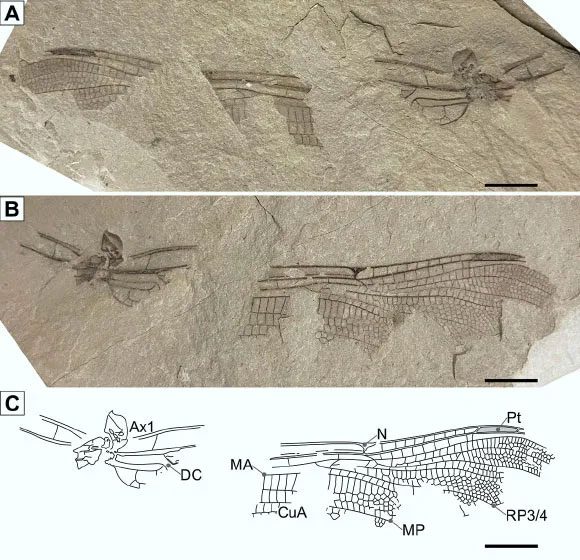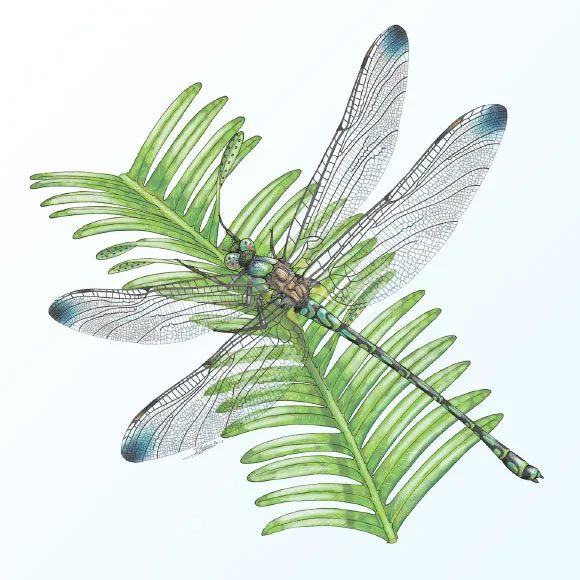The fossil of a newly discovered organism belongs to the family Liassophlebiidae, an extinct group of small dragonflies. The specimen features an incomplete forewing measuring 4.2 cm in length and 1 cm in width.
According to Sci-News, the Liassophlebiidae family is part of the superorder Odonatoptera, one of the oldest lineages of winged insects on Earth, which may have existed since the Carboniferous period.

Fossil dragonfly wing recently excavated in England – (Photo: HISTORICAL BIOLOGY).
These insects thrived during the Triassic period and notably survived the Triassic-Jurassic extinction event around 200 million years ago, one of the major extinction events in the Mesozoic era, which wiped out at least half of the species on the planet.
The dating of the specimen closely aligns with the timing of this extinction event and represents the oldest specimen found in the Liassophlebiidae family, indicating the deep origins of this lineage prior to its diversification in the Jurassic period.
According to paleontologist Emily Swapy from the Open University (UK), the new specimen includes an incomplete forewing measuring 4.2 cm in length and 1 cm in width.
The fossil was collected from the Bowdens quarry in Somerset, part of the lower section of the White Lias formation, which has revealed many valuable specimens.
This wing is remarkably well-preserved, a rarity for such ancient specimens.
With a specific dating of 202 million years, this ancient dragonfly emerged at the end of the Triassic period, representing a group that directly faced the extinction event, managed to survive, and then thrived, filling ecological niches as soon as the environment became more favorable.
Even more astonishing, the images recreated by scientists show that this dragonfly, over 200 million years old, has a “look” remarkably similar to modern dragonflies.

“Portrait” of a Triassic dragonfly – (Photo: HISTORICAL BIOLOGY).
This discovery is a crucial piece of the puzzle in filling out the “family tree” of dragonflies, contributing to the broader understanding of how insects have flourished on Earth and become the most numerous group of organisms today.


















































